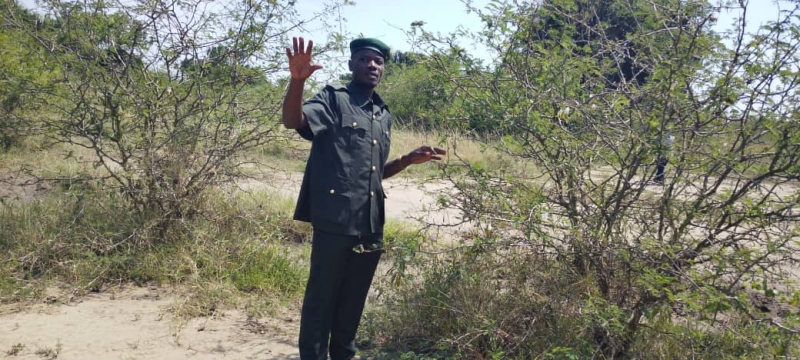Once a thriving savannah, Uganda's Queen Elizabeth National Park conservation area now faces a silent takeover.
Invasive plant species have overrun vast areas of the park, disrupting its delicate ecological balance and threatening the very wildlife that makes it famous.
The green strangler: The invasive plant choking Uganda's premier park
The threat comes from a host of aggressive plants, notably the Sicklebush (Dichrostachys cinerea), locally known as Kalemanjo
The green strangler: The invasive plant choking Uganda's premier park
The threat comes from a host of aggressive plants, notably the Sicklebush (Dichrostachys cinerea), locally known as Kalemanjo
This is not native to the ecosystem and has had several devastating impacts on the conservation efforts and the tourism sector in general.
These foreign plants spread rapidly, forming impenetrable thickets that choke out native vegetation, which wildlife relies on for food.
These foreign plants spread rapidly, forming impenetrable thickets that choke out native vegetation, which wildlife relies on for food.
" It's estimated that a staggering 40-50% of the park's former open savannah grasslands have been lost to these invaders", according to the park's ecological director, Philemon Tumwebaze.
The thickest has affected about 7961 hectares of the park, and it is against this that, through the wild wildlife authority, they need between 3_4bn to manually clear and uproot it in the affected areas.
As the invasive plants render large areas uninhabitable, animals are forced to migrate. Herbivores leave in search of edible grass, and the predators follow them. This not only breaks the food chain but also means tourists are less likely to see wildlife, directly affecting the park's appeal.
It requires four million Uganda shillings to clear a single hectare affected, and from the available funds, the park has ably cleared 765 hectares of the affected areas.
The invasion has set off a chain reaction of negative consequences that extend beyond the park's boundaries.
Manual clearing of these plants is a costly and labour-intensive process, and the Uganda Wildlife Authority (UWA) faces a monumental financial challenge to reclaim the park.
As animals like elephants, buffalo, and antelopes leave the park in search of food and water, they increasingly come into contact with neighbouring communities.
This leads to crop damage and raises the risk of poaching and conflict between people and wildlife.
Despite the scale of the problem, there is a concerted effort underway to fight back and restore Queen Elizabeth National Conservation area through community involvement by recognising the vital role of local communities and actively involving them in conservation efforts, fostering a sense of ownership and responsibility for the park's well-being.
· Community Involvement: The project recognises the vital role of local communities and actively involves them in conservation efforts, fostering a sense of ownership and responsibility for the park's well-being.
The story of Queen Elizabeth National Conservation Area is a powerful reminder of the fragility of our natural ecosystems.
It highlights a continuous journey to protect this magnificent landscape, ensuring it remains a beacon of biodiversity for generations to come.
Founded in 1952 as Kazinga National Park, combining Lake George and Lake Edward, it was named Queen Elizabeth National Park in 1954 to commemorate the visit of Queen Elizabeth 1st, spanning 8 districts including Kasese, Kamwenge, Rukungiri, Rubirizi, Mitooma and others with 2465 square kilometres, including Kyambura and Kigezi game reserves.
Founded in 1952 as Kazinga National Park, combining Lake George and Lake Edward, it was named Queen Elizabeth National Park in 1954 to commemorate the visit of Queen Elizabeth 1st, spanning 8 districts including Kasese, Kamwenge, Rukungiri, Rubirizi, Mitooma and others with 2465 square kilometres, including Kyambura and Kigezi game reserves.
Queen Elizabeth is one of Uganda's most popular tourism destinations, annually receiving the highest number of tourists













